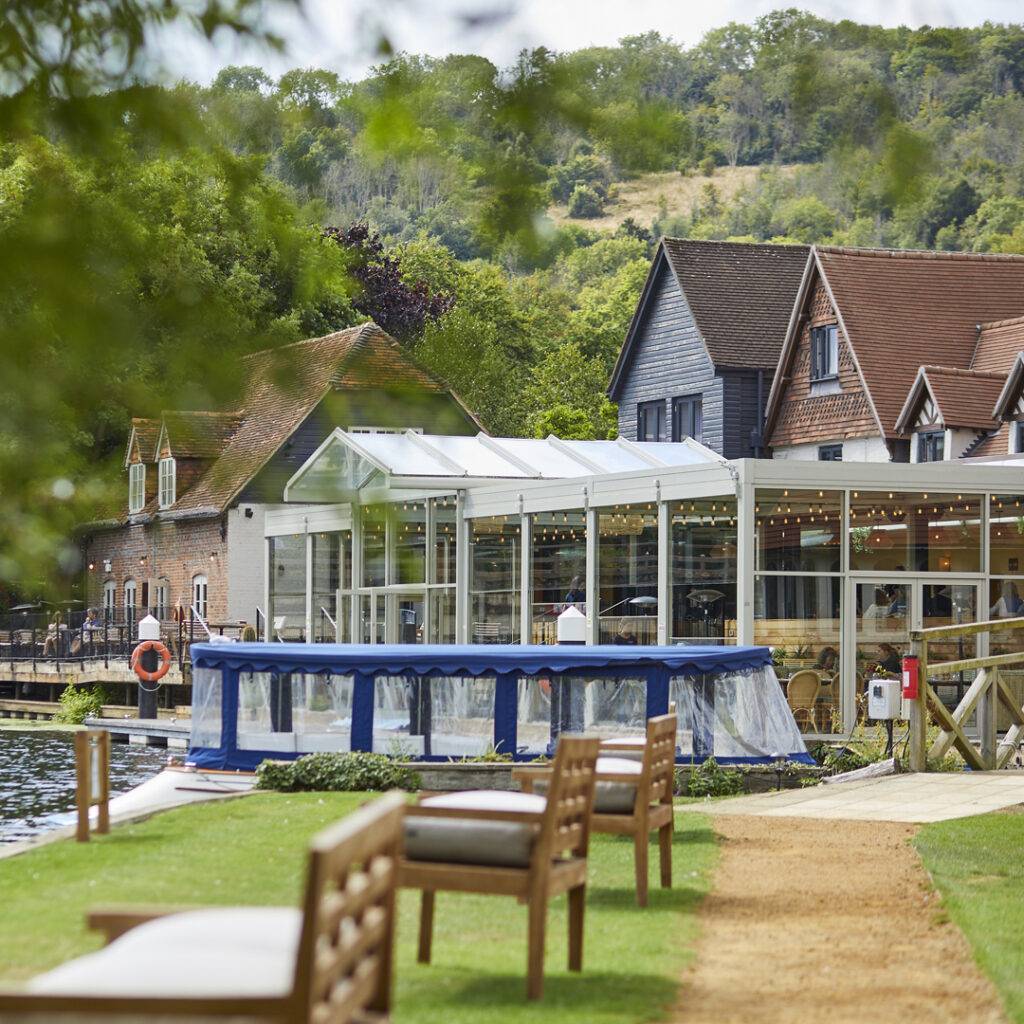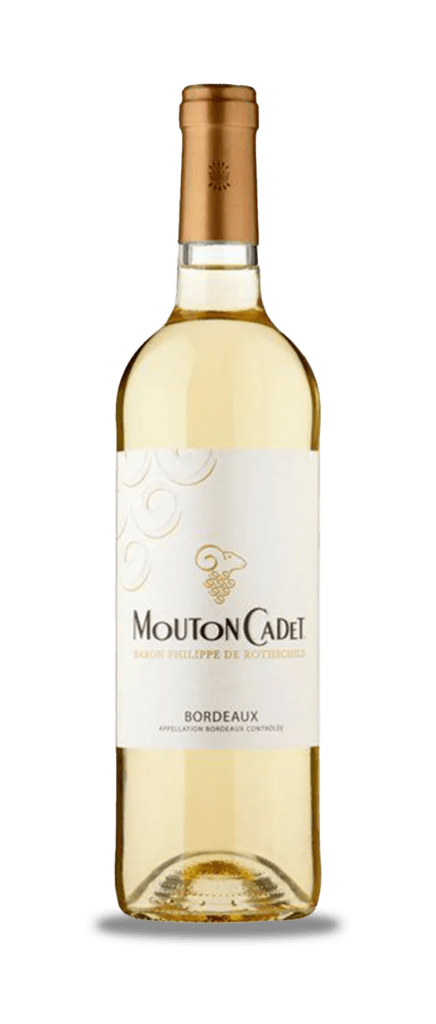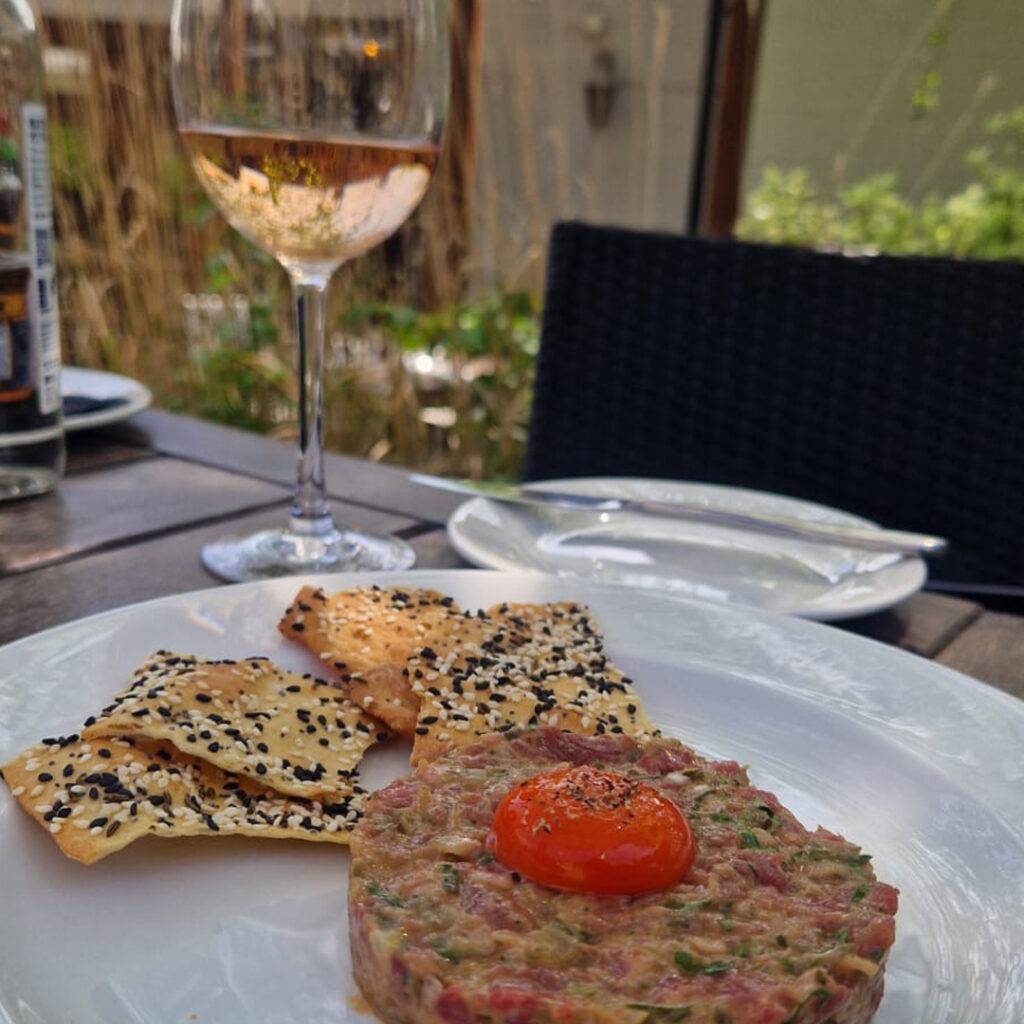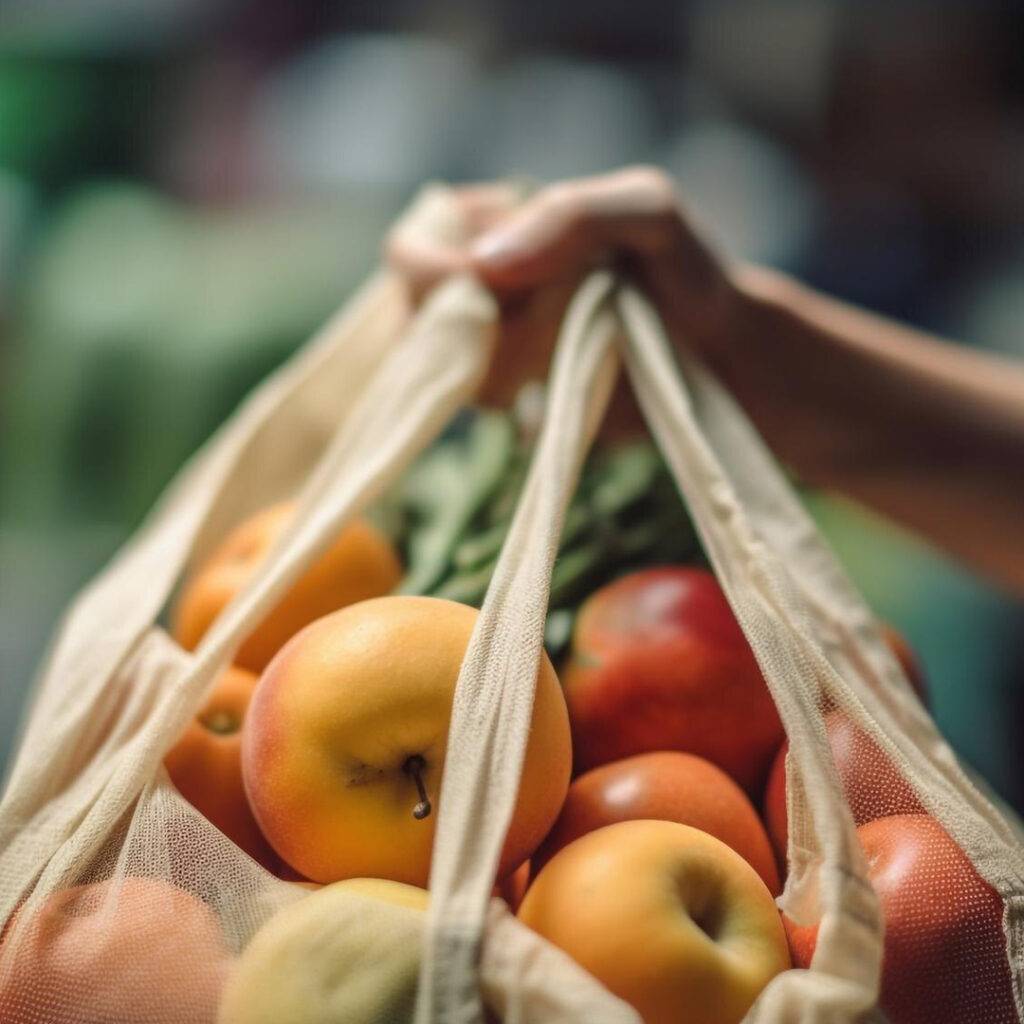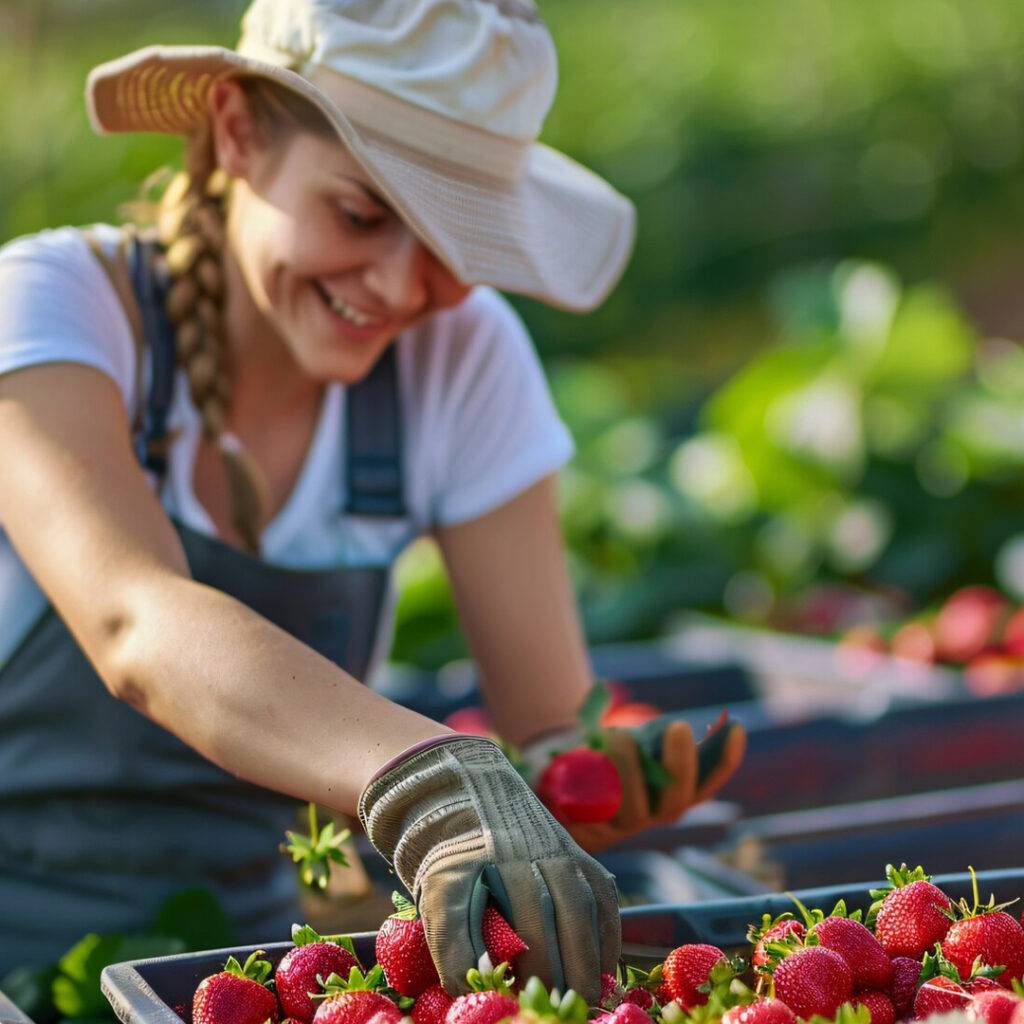Summer is the perfect season to sample the goodies at your local farm shop (NB many close on Mondays!), support homegrown growers and help the environment. Liz Nicholls offers her pick of the crops in Bucks & nearby
Fellow foodies, you’re in good hands at the universally loved Peterley Manor in Prestwood, HP16 0HH. Its founders, the Brill family, have been farming in these parts for more than 130 years. Today Peterley is a great day out, with its nursery, pick-your-own and gorgeous Barn Kitchen (a feast for your eyes and tastebuds). The multi-award winning farm shops stocks homegrown, British and seasonal produce, plus products from 100+ suppliers, including Bucks Fish, Laceys (more of which imminently), Nettlebed Creamery, Marlow Cheese Company and Norton and Yarrow. There are wellbeing events, and more too. Visit Peterley Manor Farm or call 01494 863566 to find out more.
The Laceys are into their seventh generation carrying on a passion for farming and preserving our beautiful countryside. And Laceys Farm Shop, HP14 3LP, is the cream of the crop! The farm is home to a pedigree herd of Guernsey Cows, beef cattle and arable croppers with milk bottled on site and delivered around local towns and villages, supplying independent cafes and restaurants. The Laceys are delighted to have been crowned Best Farm Shop and Deli in the 2024 Muddy Stilettos Awards. Visit Laceys Family Farm / 01494 881660.
Oxmoor Farm in Great Hampden, HP16 9RD, is open for the season! Every month the Wild Feasts team welcome a resident chef to cook a sharing banquet on the farmland to serve diners on shared tables overlooking the idyllic views (or in the renovated barn in cooler months). Beautiful new restaurant The Barn offers coffees, small plates, pizzas and natural wines and you can shop for fresh free range eggs, local honey and more. Visit Oxmoor Farm – The Barn & Wild Feast’s.
Would you like some wonderful Wagyu beef?! Pop into Town Farm Shop in Bisham, SL7 1RR, for this as well as fresh eggs, lamb, pork and pheasant (when in season). Visit Town Farm Shop or call 01628 473781.
Copas Farms Estate is a progressive, family-run, rural estate with deep roots in sustainable farming, in a fairytale setting. There are two pick-your-own Fruit Fields juicy with produce and the Copas Farm Shop in Iver, SL0 0LU. Visit Copas Farms Estate or call 01753 652727.
Nearby, soft fruit and apples grow in abundance and you can pick your own or stock up on groceries at Home Cottage Farm Shop, SL0 0BB. Call 01753 653064 or visit Home Cottage Farm to find out more!
Looking to ‘taste the rainbow’ and tuck into the freshest produce? Emmett’s Farm Shop in Little Marlow, SL7 3RR, offer this, plus chilled & frozen items, cakes, flowers, local honey & much more. Call 01628 484094 or visit Emmetts Farm Shop
Are you, like me, a sucker for a scotch egg?! This (as well as Mrs Blusch’s strawberry jam) is one of the specials attracting a loyal customer base at Amersham’s Hatchery Farm Shop, HP7 0JY. Visit The Hatchery Farm Shop or call 01494 670109.
All the goodies are created with love and locally sourced at Orchard View Farm in Little Meadle, HP17 9UG. This postcard-pretty setting is a dog-friendly and also has a café, farm shop, butchery and campsite. Call 01844 273387 or visit ORCHARD VIEW FARM
Farming comes first at the small but perfectly formed Buckmoorend Farm Shop in Butler’s Cross, HP17 0UT. You’ll find quality pork, beef and lamb, available for sale and the family team are involved in the entire chain, from farm to fork. They also serve hot food and drinks from the farm kitchen. The farm is surrounded by natural woodland amid the undulating Chiltern Hills and is part of the Chequers Estate, steeped in history. Call 01296 622472 or visit Buckmoorend Farm to find out more.
From pies to parties the team at Bradmoor Farm, Shop & Café in Haddenham, HP17 8JX are ready & waiting to help you! The butcher’s counter is full of quality cuts of meat and is a great stop for barbecue-lovers – the team’s banging burgers and sausages are freshly made on site. Call 01844 299387 or visit Bradmoor Farm to find out more.
Suppliers to the best in the hospitality business, Boarstall Meats was established in 2000 to market all the livestock produced on the Ernest Cook Trust farm of 500 acres half of which is on Muswell Hill (besides the Pheasant in Brill) which in places in 500ft above sea level and therefore only suited to grazing livestock. The shop is open Thursday to Saturday, and the team can cater for your outdoor events. Call 01844 238256 or visit Boarstall Meats to find out more.
Still fresh after 70 years in business, Rectory Farm, in nearby Stanton St John, OX33 1HF, is home to 45 acres of PYO fields, a well-stocked farm shop, cafe and woodland play area for a beautiful day out in the countryside. I’m a little bit obsessed with the coffee, with an obligatory wodge of cake. I also highly recommend the pies and sausage rolls from the Eadles Farm in neighbouring Beckley and Kingcott Dairy’s award-winning cheeses. Home – Rectory Farm (rectoryfarmpyo.co.uk)
For artisan foods with provenance you can’t beat The Wild Pig (formerly known as The Crazy Bear Farm Shop) at Stadhampton, OX44 7XJ. The team here started breeding Gloucestershire Old Spot pigs in 2006 and it was the world’s first farm to be TSG approved, awarded for welfare excellence by Compassion in World Farming. Visit The Wild Pig for more about this & scenic hot air balloon rides!
Whether you’re looking for quality meat, seasonal veg, homemade pies, seasonal game or tasty chutneys, Kings Farm Shop in Nash Lee End near Wendover, HP22 6BH, is always worth a visit. For more info please call 01296 622014 or visit King’s Farm Shop in Wendover
The rosettes hang proudly at Parrott Bros Farm Shop on Beechmoor Farm in Whitchurch, HP22 4LG. You’ll find top-quality meat including gammon, venison, rabbit, chicken, duck, guinea fowl, partridge and sausages as well as pork pies, fruit and veg, dairy and bakery items, soups, pickles and preserves! Call 01296 641207 or visit Parrott Bros
Priding themselves on the best homegrown and homemade produce, the team at Waterperry Farm Shop, OX33 1LB, deliver to a large portion of west Bucks. Visit Waterperry Farm Shop or call 01844 369351 for more info.
I’ve almost got to the end of my greedy list but a shout-out to Jeremy Clarkson’s Diddly Squat Farm Shop over in Chipping Norton (as seen on Amazon Prime). Diddly Squat Farm Shop
You can find more shops near you – or wherever else you’re visiting over the summer – at Fabulous Farm Shops. Tuck in & enjoy!
